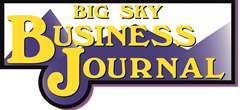South Carolina is the third worst state to have a baby, writes Dean Clancy, Senior Fellow, Health Care Policy for Americans for Prosperity. The key driver to the problem, he states, is government red tape “that creates artificial shortages for hospitals, obstetrics services, perinatal services, and intensive neonatal car.”
Clancy sites an associate analyst, Thomas Kimbrell, whose data shows that in South Carolina families use neonatal intensive care units (NICU) 30 times more often than what government estimates claim is needed under the state’s “certificate of need” plan.
He goes on to say that State and local “certificate of need” or CON laws are well-named: they’re the biggest “con” in American health care today. For Montanans that’s problematic because Montana is one of the handful of states that still requires “certificate of need” to expand health care.
“These unnecessary, harmful laws require hospital systems and other health facilities to get approval from a government agency before they can open or expand their facilities in a given area,” said Clancy.
Often, just adding a single new bed or MRI machine requires government approval, a process that can add years and thousands of dollars in costs.
“All Certificate of Need laws should be repealed to boost competition and reduce costs for patients,” claims Clancy.
Kendall Cotton, President and CEO of Frontier Institute, reports that, “Under Montana’s “certificate of need” program, the government gets to determine if a new health care business is ‘needed’ in a process that lasts at least six months and charges a fee of $500, or 0.3% of the intended expenditure. The effect is to limit competition that could give residents more choices and lower costs.”
For example, in 2019 Montana denied new applications for home health businesses in Yellowstone County, despite the government’s own estimate of 795 patients in the county with an “unmet need” for home health care. Those new services could have opened up beds at hospitals and increased access to care during the pandemic.
In addition to home health, Montana requires certification for outpatient surgery centers, nursing homes and even drug rehabilitation facilities.
Certificate of need programs were pushed by the federal government in 1974, but by the mid-1980s the program was declared a failure and Congress withdrew it.
While 15 states dropped their certification programs, Montana did not. Existing health care facilities benefit from keeping out new competitors, so the programs remain stubbornly in place.
Research by the Mercatus Center at George Mason University shows abolishing certificate of need laws could help reduce health care costs, potentially saving each Montanan $214 per year.
An effort in the 2019 legislature to repeal Montana’s certification program was vetoed by Gov. Steve Bullock, who said the certification laws “prevent the creation of excess capacity in health care facilities.” In other words, the laws reduce competition that could increase access and decrease costs.
“With health care capacity at critical levels for many Montana counties, state lawmakers should repeal harmful and anti-competitive certificate of need laws,” advises Cotton.




